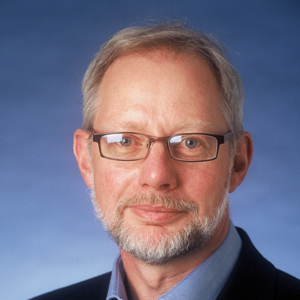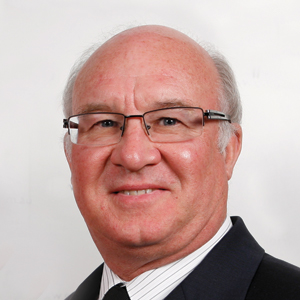This year, the New York Times followed suit, heralding the festival city as a ‘place to go’. Adelaide’s recent success as a destination raises a bigger question – what makes a good city and how do you create one?
 Flicking through an inflight magazine somewhere between Australia and Indonesia, Professor Mads Gaardboe was intrigued to find an article about an initiative both close to his heart and close to his office. Art After Dark sees Adelaide’s West End come alive every Thursday night as cultural organisations, including UniSA’s own galleries, extend their opening hours to create a vibrant arts hub.
Flicking through an inflight magazine somewhere between Australia and Indonesia, Professor Mads Gaardboe was intrigued to find an article about an initiative both close to his heart and close to his office. Art After Dark sees Adelaide’s West End come alive every Thursday night as cultural organisations, including UniSA’s own galleries, extend their opening hours to create a vibrant arts hub.
It’s an exciting yet still-emerging initiative that says a lot about the way Adelaide is developing as a city. That it found space in an international magazine also says a lot about what the modern tourist wants to know.
Icons and traditional drawcards are important, but so too are the quirky, the local specialties and having a range of options to help locals and visitors alike find their interests and their place in a city. People want to know what makes a city tick.
 Prof Gaardboe, Head of UniSA’s School of Art, Architecture and Design, and Graham Brown, UniSA Professor of Tourism Management (pictured left), share similar views on the key to all of this. They believe the answer lies in making urban spaces work, making them appealing and letting people know where they are.
Prof Gaardboe, Head of UniSA’s School of Art, Architecture and Design, and Graham Brown, UniSA Professor of Tourism Management (pictured left), share similar views on the key to all of this. They believe the answer lies in making urban spaces work, making them appealing and letting people know where they are.
“If people have a sense of attachment to a place – and it could be with parts of the city or with the city as a whole – then it is likely the city is working well,” Prof Brown says.
“These days, cities also need to be visible to the world. We’ve got an external audience; people who aren’t necessarily residents and aren’t necessarily visiting, but they are observing what the place is like – media commentators, potential investors, prospective migrants.
“We need to be thinking about how a city can serve groups of very different people. If a city is developing well and creating the right attractions, it does, in most cases, benefit locals as well as visitors.”
That’s a view shared by former Adelaide Lord Mayor Stephen Yarwood, who championed a number of placemaking initiatives during his time as mayor.
“Modern cities are brands and the smart ones know that they are competing with other cities around an increasingly connected world,” he says.
“What makes a good city? There are thousands of elements, from good strategic planning to leadership that defines its values and makes the city not only good quality but unique. And it’s about the values of the community being expressed through urban form.”
Prof Gaardboe, an expert in urban regeneration, says modern urban design is not just about creating attractive buildings but about creating them in context – designing the streets as well as the bricks and mortar.
“Iconic, standout structures like the Eiffel Tower or the Sydney Opera House are important but, beyond single icons, other cities are successful by using architecture in their own way,” he says.
“For example, what makes my home of Copenhagen a lovely city to be in is its streets. They are made of high-quality materials, there is street furniture, and careful attention has been paid to the design of spaces so the streetscape becomes a series of buildings that all together create ambience.”
Prof Gaardboe points to what Brisbane has done with its Southbank precinct as another example of creating a place where people want to be.
“They have some very big buildings down on the river and that’s fine, but they have treated the space between the buildings and the river in a very clever way,” he says.
“The whole Southbank precinct is designed as an entity. It’s the way it’s landscaped, the architecture of that stretch of park along the river, and all the activities encouraged by the certain features, such as swimming lagoons, that give it memorable character.
“There are different levels and it’s very carefully designed and coordinated. But if you are asked which building is particularly good, it’s difficult to say – and that’s the result of successful urban design.”
Profs Brown and Gaardboe agree that Melbourne has done an exceptional job in urban design by creating its inner city laneway culture – a model that Adelaide is following with some success.
“You walk down one of those big city streets, you look into these little laneways and you see lots of lights and people – it’s an invitation to walk in and explore it,” Prof Gaardboe says.
“In recent years, Adelaide has really developed that laneway culture with streets like Peel Street – which only two years ago was a lifeless thoroughfare for cars but now is buzzing with new electric bars and hole-in-the-wall cafes.”
Prof Brown believes there are four things that make a good city, irrespective of its setting, natural and manmade attractions, weather or tourist trappings.
“A city needs to have a stimulating environment that offers opportunities for diverse lifestyles, there should be a range of different spaces that work for different groups, and it needs to be user-friendly and easy to get around,” he says.
“And at the heart of it all, a city needs people who are proud to live there, or have an understanding of why others choose to.
“People who are proud of living where they do tend to support developments, join in activities and contribute ideas.
“It’s that notion of contagious enthusiasm that’s communicated to other people based on a strong liking of where you live and thinking it’s a good place.”
Research by Prof Brown conducted at the Sydney Olympics in 2000 revealed just how important the role of local residents is in creating a good city. When 40,000 visitors to the Sydney Olympics were asked what they enjoyed most, the second most common answer (after a specific sporting event) was the friendliness of the local people.
Yarwood, who now consults as an urban futurist, says the best cities are the ones that can succeed in being liveable, sustainable and productive at the same time.
“These are the cities that are going to attract the best and brightest from around the world,” he says.
“They are going to be destinations not only for tourists but also for young people who’ll start new enterprises and for big businesses that want a high-quality location to attract high-quality workers.”
So how is Adelaide performing? Our UniSA commentators generally believe the South Australian capital is faring very well. Both agree that the focus on developing a significant central precinct around the River Torrens has been important and they see great potential in further expanding this to incorporate North Terrace and Rundle Mall.
Looking ahead, the clever redevelopment of the old Royal Adelaide Hospital site will be a key, but right now, Prof Gaardboe is happy with how things are evolving in the city.
“I had a meeting in February with all the heads of architecture schools and building schools in Australia and their reaction to our city said a lot,” he says.
“The event was held in the University’s Jeffrey Smart Building, a nice building in itself, and looking out from there you can see all the things that are happening or have recently been completed, from the new hospital, past the new Convention Centre, right through to the new Adelaide Oval.
“People were talking about how Adelaide is really moving now – that the momentum is building, with new developments and new ways of using our urban spaces.
“When you also consider all of Adelaide’s festivals and events, it all adds up to something substantial.”
Find out more about the Centre for Tourism and Leisure Management on its website.